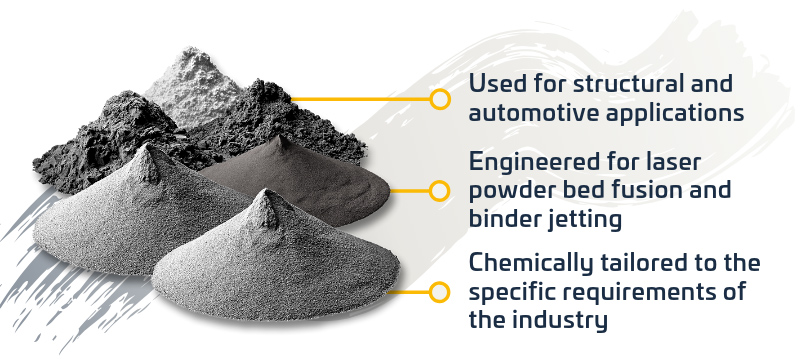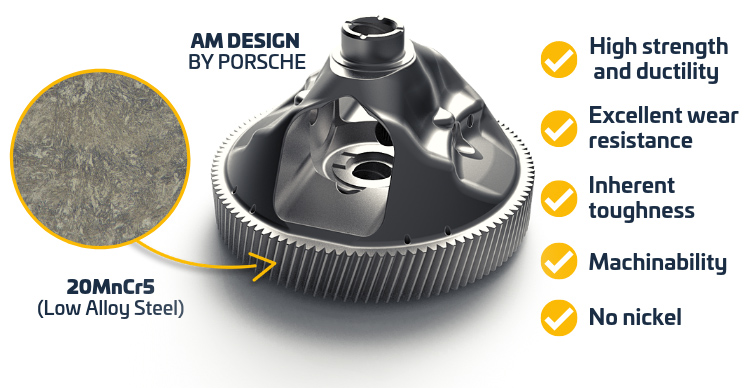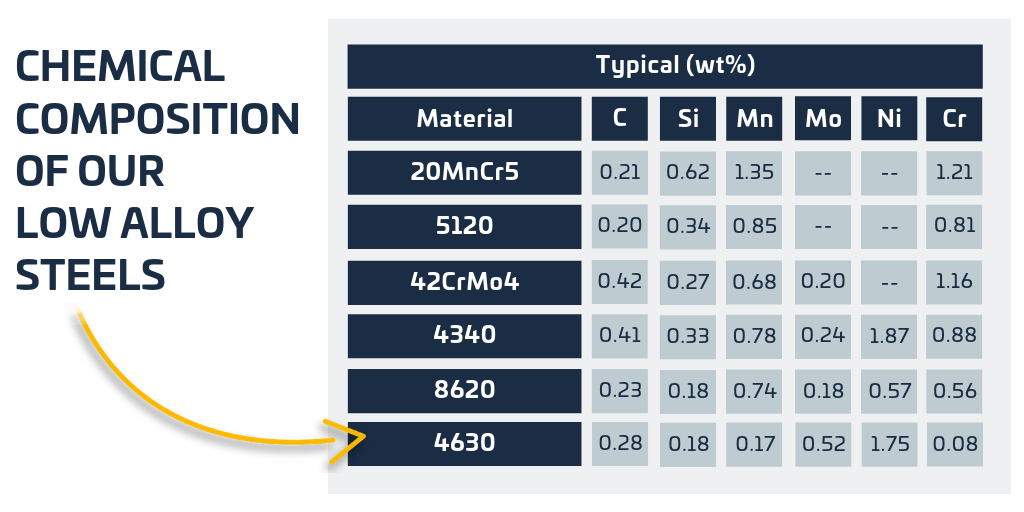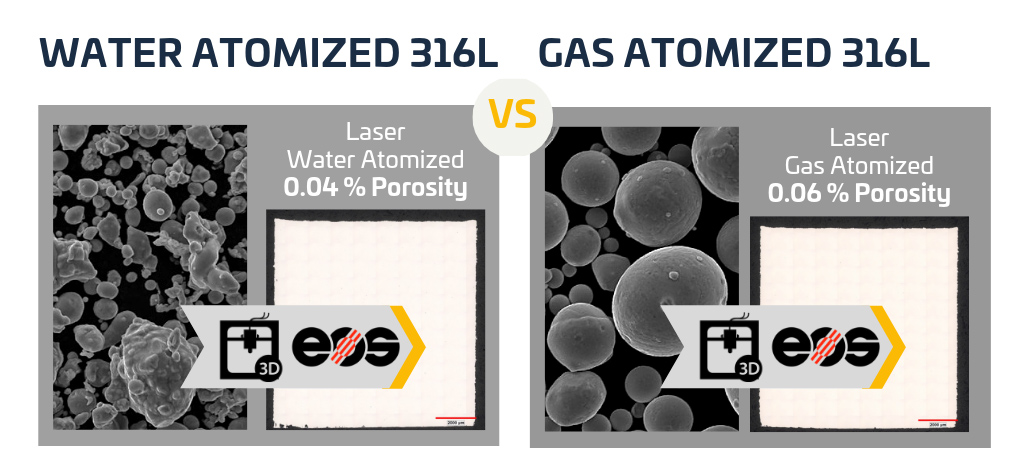
The landscape for metal AM materials is in need of reinvigoration, and GKN Additive Materials, a sub-brand of GKN Additive, plays a key role in bringing new metal AM powders to market; metal powders that fit the bill for specific industrial sectors and applications. Presently, GKN Additive Materials offers a number of advanced metal powders for additive manufacturing, including its range of ANCORTI™ titanium alloys and ANCORAM™ specialty steel, stainless steel, nickel, aluminum and copper alloys.
Within its steel powder business, GKN Additive Materials is pioneering new low alloy steel powders for additive manufacturing, which retain the mechanical properties of existing industrial materials—including cast, wrought and MIM steels. These breakthrough low alloy steel powders create new opportunities for additive manufacturing in sectors such as the automotive industry, where scalability and cost are key drivers.
Low Alloy Steels in Automotive
GKN Additive Materials is with partners in the automotive sector to develop low alloy steel AM powders chemically tailored to meet industry requirements and the standards set by Metal Powder Industries Federation (MPIF) and ASTM International.
GKN Additive Materials’ ANCORAM™ 4605, a gas- or water-atomized low alloy steel powder containing nickel, molybdenum, and manganese, is already commercially available and is considered ideal for parts with particularly thick sections. Particle sizes of all low alloy steels are tailored for LPBF and binder jetting processes and are available now.
The powder metal leader also successfully developed 20MnCr5, another low alloy steel powder material with mechanical properties ideal for automotive prototyping applications. Confirming its real-life application possibility, the material was used by Porsche Engineering in the development of a new electric powertrain. The 20MnCr5 steel powder is characterized by high strength, ductility, high fatigue strength, excellent wear resistance through case hardening, inherent toughness and machinability.

The automotive industry will greatly benefit from using low alloy steel materials for prototyping applications at first, then large-scale production components where scalability is necessary. The quick turn-around for parts manufactured through AM allows engineers to design, test and redesign components within a matter of weeks - if not days.
Optimized Steel Powders for Additive Manufacturing
This specific 20MnCr5 Low Alloy Steel powder is not only optimized for automotive applications: it was also specifically adapted for LPBF in terms of particle size and composition. The powder, produced by gas atomization, offers excellent flowability and printability properties, resulting in a cost-effective LPBF process.
In addition to the 20MnCr5 powder, GKN Additive Materials is developing a full range of Low Alloy Steel powders for AM that are variable in terms of hardenability, heat treatment, and mechanical properties. Each powder is distinguished with a different metal composition, integrating varying levels of carbon (C), silicon (Si), manganese (Mn), molybdenum (Mo), nickel (Ni) and chromium (Cr).

By altering the chemical composition of each alloy, GKN Additive Materials is creating a new class of metal powders for additive manufacturing that meets the various mechanical requirements from industrial partners. Utilizing both water- and gas-atomization, materials can now be scaled to meet the production quantities needed.
GKN Additive Materials’ steel and stainless-steel powders can be used for both LBPF and binder jetting. Materials are available through gas or water atomization with particle sizes being tuned for the AM process. Utilizing water atomization creates the opportunity to achieve higher production volumes without sacrificing part performance because of the scalability of the atomization technique.
In terms of part performance, these powders have demonstrated consistency—whether they were produced using gas or water atomization or used with LBPF or binder jetting processes. In tests comparing the printability and mechanical properties of gas- and water-atomized 316L for LBPF, no major discrepancy was observed for the more scalable water-atomization processed powder.

Still, there are challenges that GKN Additive Materials must reckon with and overcome in the development of more low alloy steel powders. One of the main difficulties is related to the high carbon content in low alloy steels, which—in traditional manufacturing—contribute critical high-strength properties. With AM, however, high carbon content often leads to cracking in the print process and ultimately defective parts. GKN is therefore finding alternative chemistry compositions to ensure both strength and printability, without increased carbon levels.
Bridging a Gap in the Market
The primary benefits of GKN Additive Materials’ low alloy steel powders for additive manufacturing come from the ability to match the mechanical properties of cast, wrought or MIM metals, which industrial manufacturers are accustomed to using. The introduction of the alloy materials broadens not only the company’s portfolio but the AM metal powder market at large. Looking at steel specifically, there is a gap in the market for AM powders that offer high wear resistance, fatigue strength, performance-driven mechanical properties and, importantly, efficient material cost.
GKN Additive Materials’ low alloy steel materials present a definitive step toward bridging this gap and unlocking new applications for metal 3D printing in automotive and other sectors.


